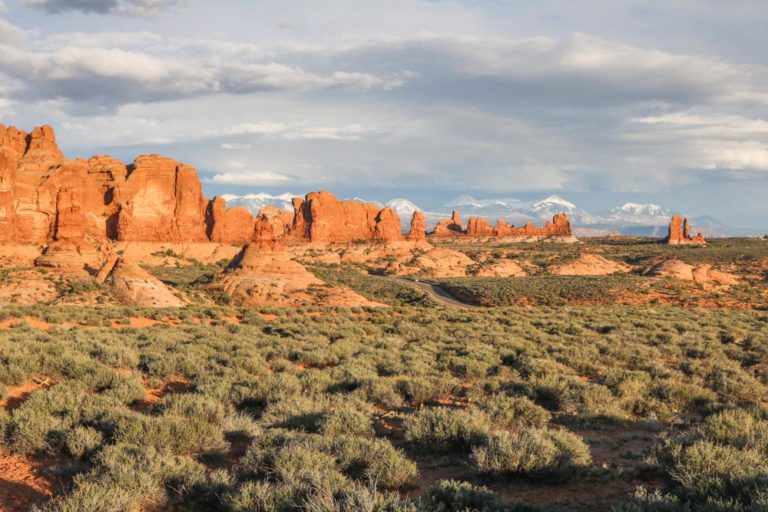Best USA National Parks for Wildflowers
The great things about America’s national parks is that they offer something to do all year round. No matter the season, there will be fun activities to do or sights to see.
From winter snowshoeing in places like Crater Lake and Acadia to summer snorkeling in the Channel Islands or Biscayne National Park, there are plenty of national park activities to keep you outdoors year-round.
Come spring, however, as ice thaws and snow melts, something magical happens in the parks.
Spring, and in some (mountain) parks early-summer, is when nature awakes from a long winter’s rest. Buds pop up on tree branches, waterfalls are roaring and wildflowers bloom.
Especially those wildflowers put up quite a spectacle in certain national parks, carpeting otherwise-barren desert flats, covering above-tree-line mountain slopes and adding color to old-growth forests.
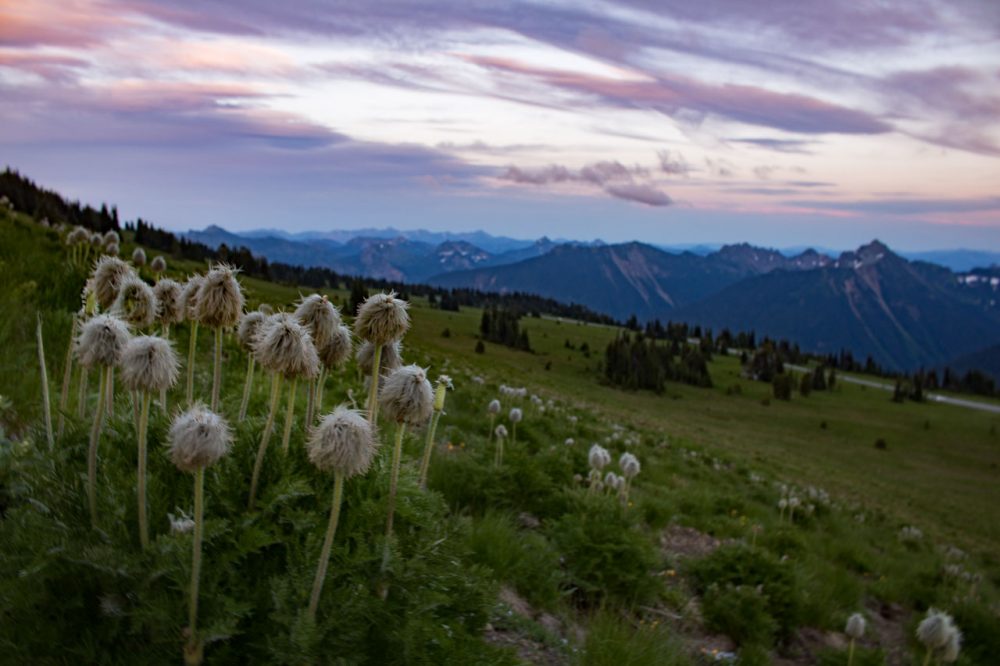
This national parks for wildflowers post contains affiliate links. You can read more about our Terms of Use / Disclosure here.
Best National Parks to See Wildflowers
Check out the following parks; you won’t find any better wildflower destinations in the U.S.
From California’s deserts to Montana’s mountains and the hills of Appalachia, these are the best national parks for wildflower watching.
1. Joshua Tree National Park, California
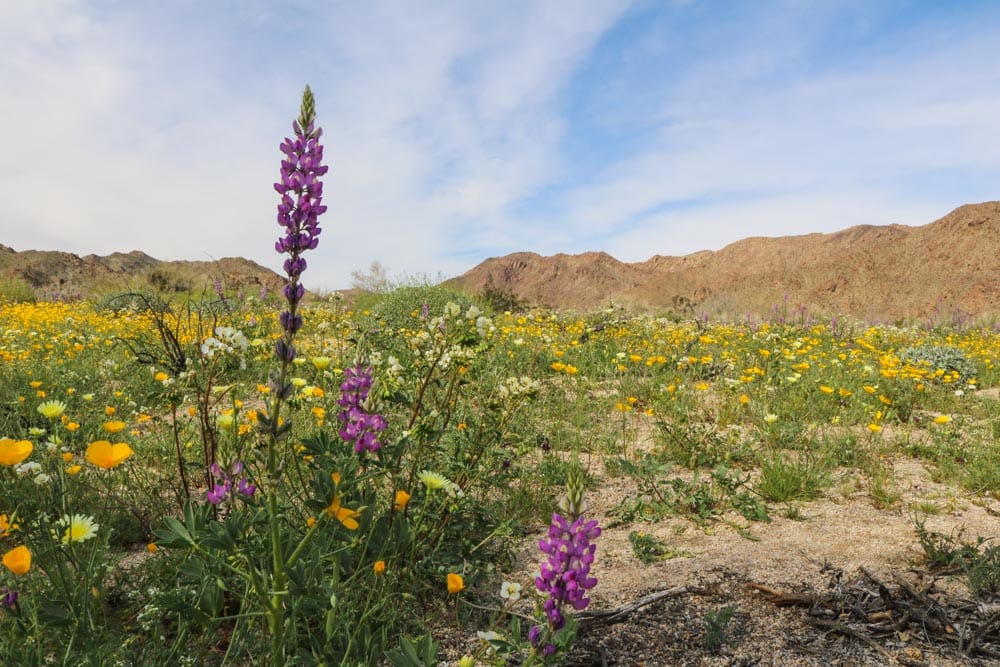
A desert park may not be the first wildflower national park you think of, yet hundreds of plant species thrive in this harsh environment.
Protecting areas of both the Mojave and Colorado Deserts, Joshua Tree National Park is spread out across various elevations. This, of course, comes with a huge variety of desert plants and wildflowers.
The blooming season, however, depends greatly on winter precipitation and spring temperatures. It’s difficult to predict precisely when and where flowers will bloom.
Generally speaking, though, you’ll be able to go on the first wildflower hikes in Joshua Tree National Park in the Pinto Basin as early as February and March.
As the months go on, the colors creep upward to higher elevations. It’s not uncommon to still have abundant wildflowers as late as June in desert areas higher than 5,000 feet.
- Joshua Tree National Park flowers to look for: desert paintbrush, beavertail cactus, Utah firecracker, Mojave aster, California barrel cactus, prickly pear cactus and the Joshua trees themselves
- Peak Joshua Tree wildflower season: February and March at lower elevations; April and May at higher elevations
- Nearest towns: Twentynine Palms (5 miles), Joshua Tree (5 miles) and Palm Springs (38 miles)
- Nearest airports: Palm Springs (PSP) and Los Angeles (LAX)
2. Great Smoky Mountains National Park, North Carolina & Tennessee
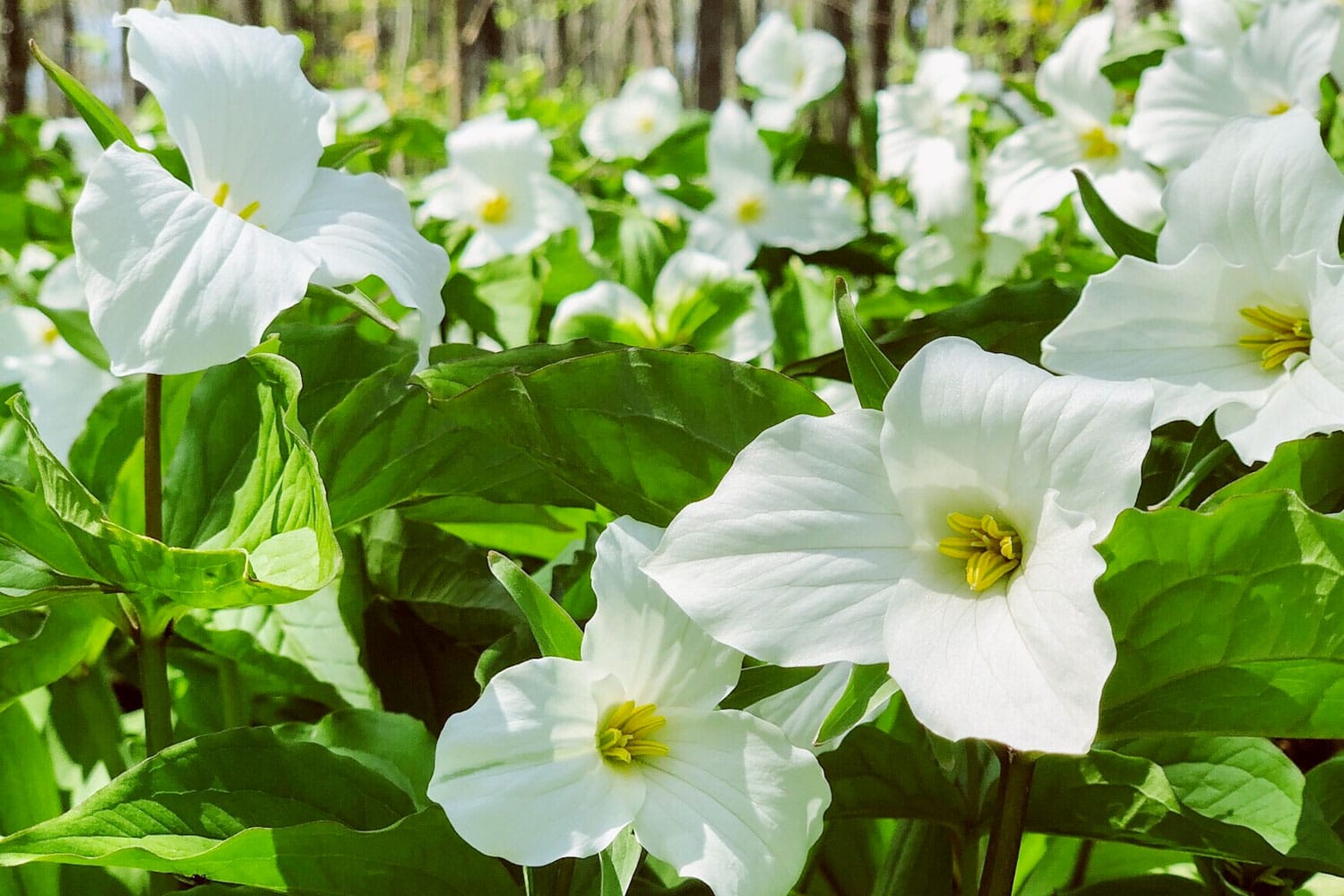
When the snow has melted and temperatures rise in the Great Smoky Mountains, this beautiful national park becomes a wildflower paradise.
With more than 1,500 flowering plant species, more than any other U.S. national park, this is unquestionably one of the best national parks for wildflowers. It’s sometimes nicknamed the “Wildflower National Park” for a reason.
Spring is also waterfall season in the Smokies, so head out for a hike in these mysterious mountains and watch some waterfalls and wildflowers. Keep your eyes peeled for spring beauty, bloodroot, smooth Solomon’s seal, various trillium species and many other flowers.
While spring features colorful ephemerals, you can actually see numerous blooms through summer and well into fall as well.
- Great Smoky Mountains National Park flowers to look for: trilliums, trout-lily, bloodroot, spring beauty, smooth Solomon’s seal, wild strawberry, columbine, dwarf iris, bleeding heart, azalea and blue phlox
- Peak Great Smoky Mountains wildflower season: February through September, with a peak between mid-April to about mid-May
- Nearest towns: Gatlinburg (2 miles), Cherokee (3 miles) and Townsend (3 miles)
- Nearest airports: Alcoa (McGhee-Tyson, TYS) and Asheville (AVL)
3. Glacier National Park, Montana
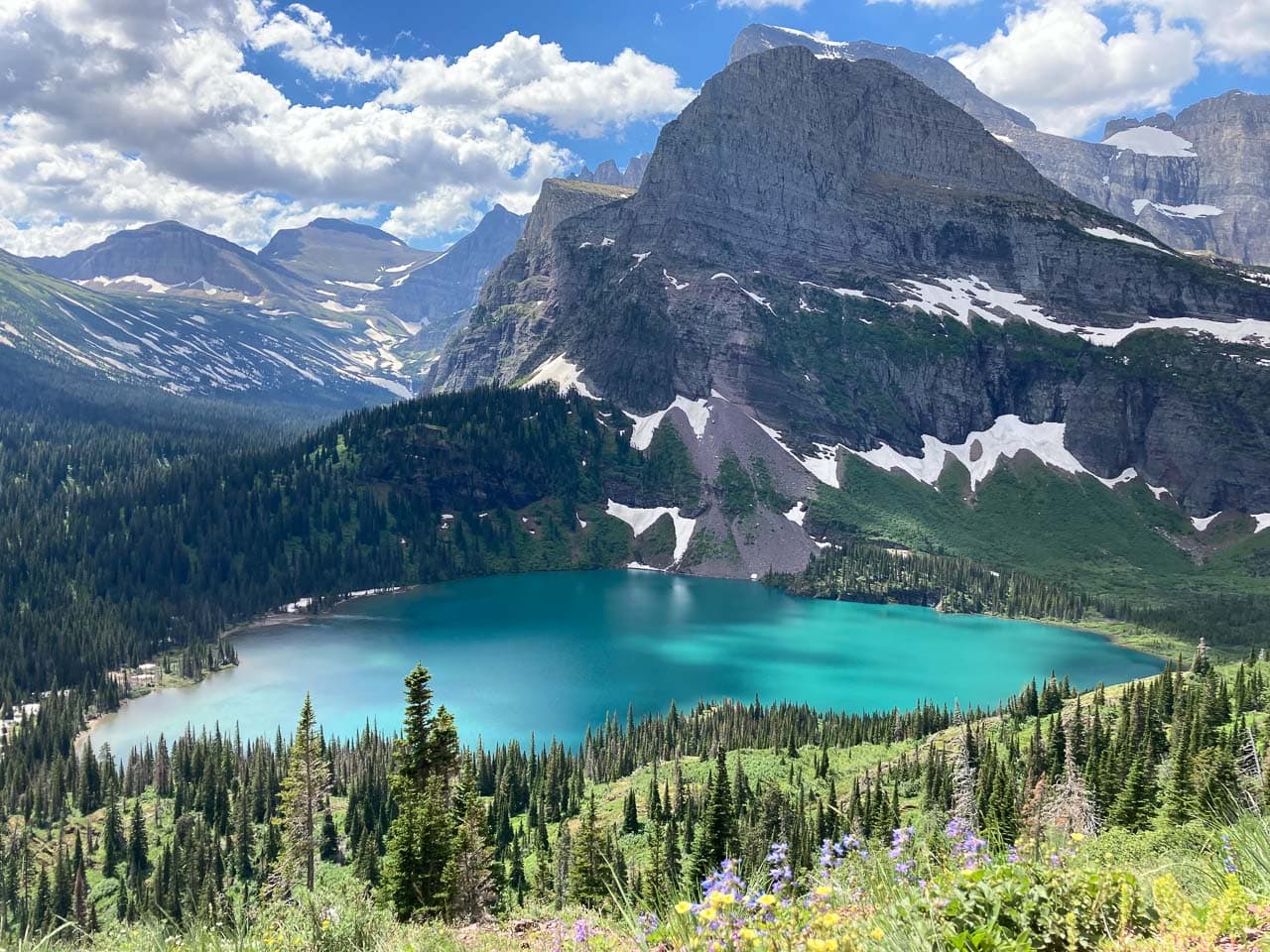
Called the “Crown of the Continent”, Glacier National Park is one of the most spectacular national parks in the U.S.
It’s located on the border with Canada, and forms the world’s first International Peace Park with neighboring Waterton Lakes National Park in Alberta. If you’d like to visit both parks—and both countries—make sure to grab the applicable E-visums if necessary.
Few vistas can compete with Glacier’s expansive meadows ablaze with the colors of millions of wildflowers, backed by its characteristic mountain peaks. The growing and blooming season is pretty short in these rugged high-altitude environments, though.
Do some of the many stunning Glacier National Park hikes to see and photograph the wildflowers from up close.
From June through August, you can see myriad wildflowers—almost 1,000 species!—in Glacier National Park, including subalpine icons like beargrass, glacier lilies, asters and lupines.
See them along the magnificent Going-to-the-Sun Road, one of the greatest roads in the national park system.
- Glacier National Park flowers to look for: glacier lily, beargrass, clematis, purple aster, lupine, geranium and daisy
- Peak Glacier wildflower season: June through August
- Nearest towns: Columbia Falls (18 miles), Whitefish (26 miles), Browning (29 miles) and Kalispell (34 miles)
- Nearest airports: Kalispell (Glacier Park International Airport, FCA) and Missoula (MSO)
4. Saguaro National Park, Arizona
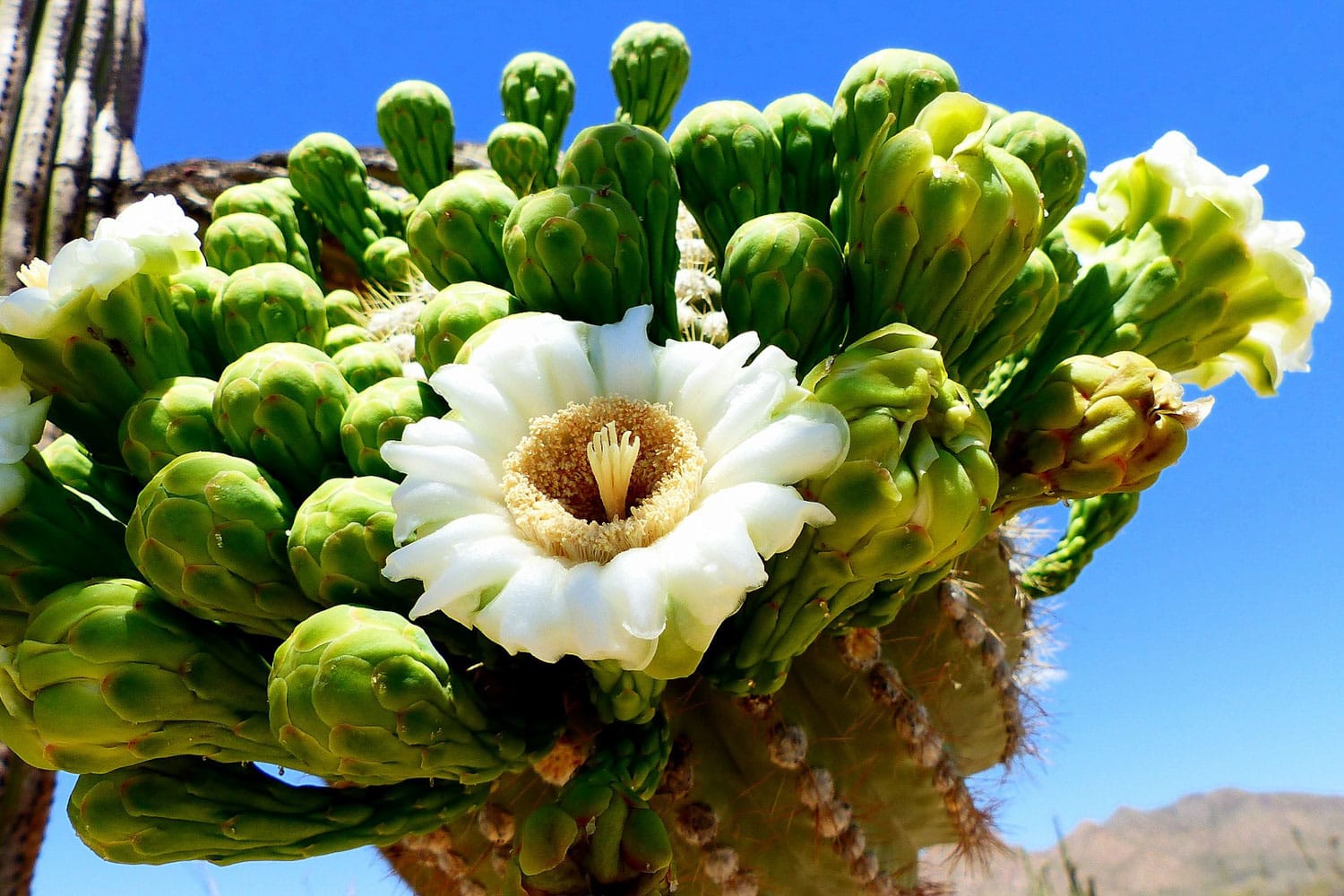
Even though it’s not easy to predict when the peak of the wildflower season in Saguaro National Park will be, anyone visiting in spring or summer (which is scorching hot) will see at least some blooming desert plants.
The intensity and length of Saguaro’s wildflower season depends greatly on the amount of winter rain, temperature fluctuations and other weather conditions.
Yet, when you visit this Arizona national park in spring, there will always be some reliably blooming plants along the park’s hiking trails.
From the white flowers of the park’s namesake saguaro cacti to yellow desert marigolds and prickly pear cactus flowers, the spring flower displays are one of the top attractions in Saguaro National Park.
That being said, this is a park where plants bloom throughout the year. There are at least three flowering seasons in Saguaro.
- Saguaro National Park flowers to look for: saguaro cactus, ocotillo, prickly pear, desert verbena and desert lupine
- Peak Saguaro wildflower seasons: March; April and May; June through August
- Nearest town: Tucson (15 miles)
- Nearest airport: Tucson (TUS)
5. Shenandoah National Park, Virginia
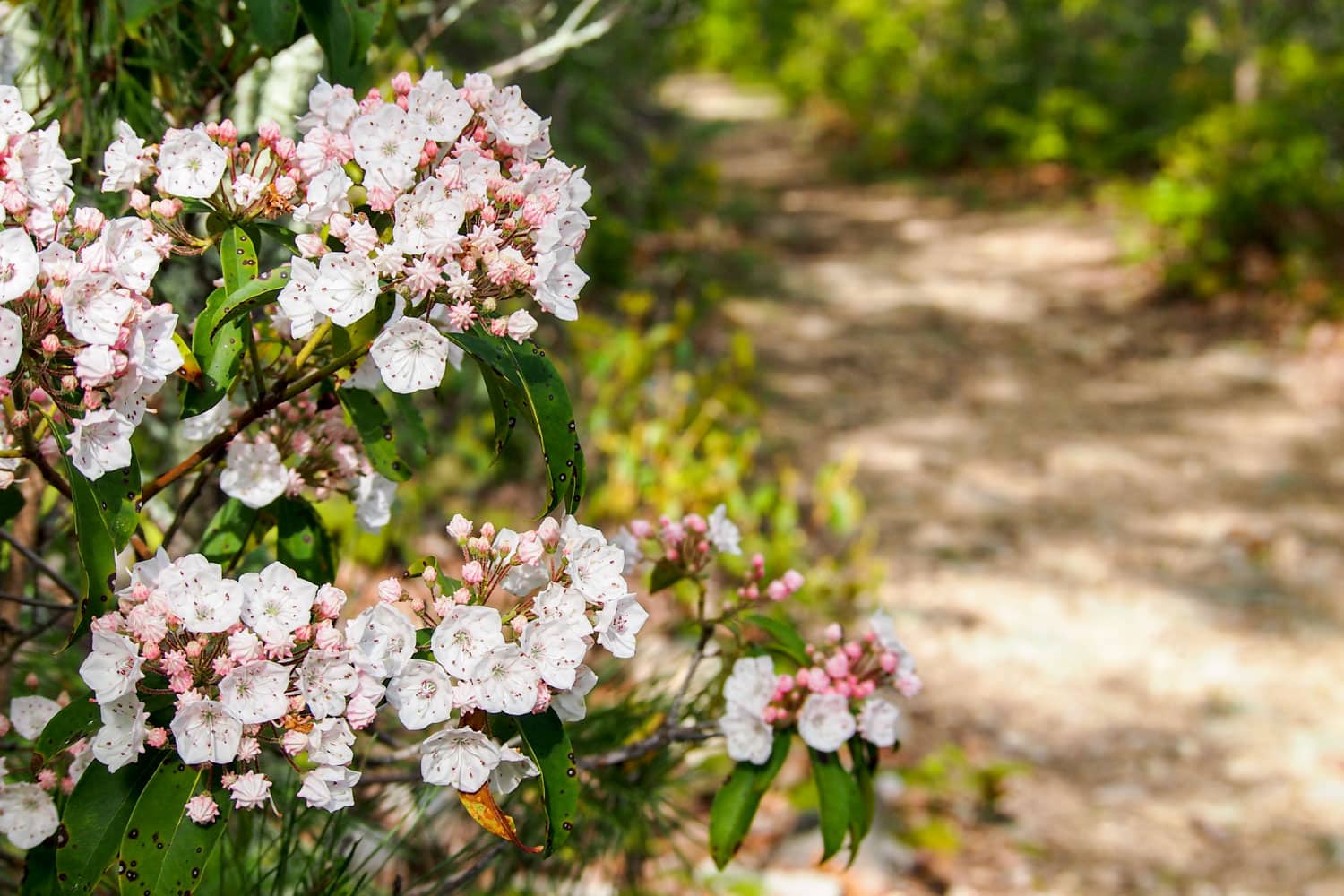
In addition to abundant wildlife, there are no fewer than 860 species of wildflowers in Shenandoah National Park, about 20% of which are aster species. Other common Shenandoah wildflowers include lilies, flowers of the pea family, mint and mustard.
Simply put, wildflowers thrive in Shenandoah National Park, which is one of the best places to see national parks wildflowers.
This enormous diversity is especially noticeable in spring at the park’s lower elevations along South River and Rose River, which are two of the best waterfall hikes in Shenandoah.
Through summer and fall, you can see wildflowers showing off their colors all along Skyline Drive and in Big Meadows.
- Shenandoah National Park flowers to look for: aster, wild geranium, mountain laurel, Queen Anne’s lace, thistles and goldenrod
- Peak Shenandoah wildflower season: late-March through October
- Nearest towns: Fort Royal (north, 1.5 miles), Waynesboro (south, 5 miles), Harrisonburg (west, 24 miles) and Charlottesville (east, 25 miles)
- Nearest airports: Charlottesville (CHO), Richmond (RIC) and Washington, D.C. (Dulles, IAD)
6. Grand Teton National Park, Wyoming
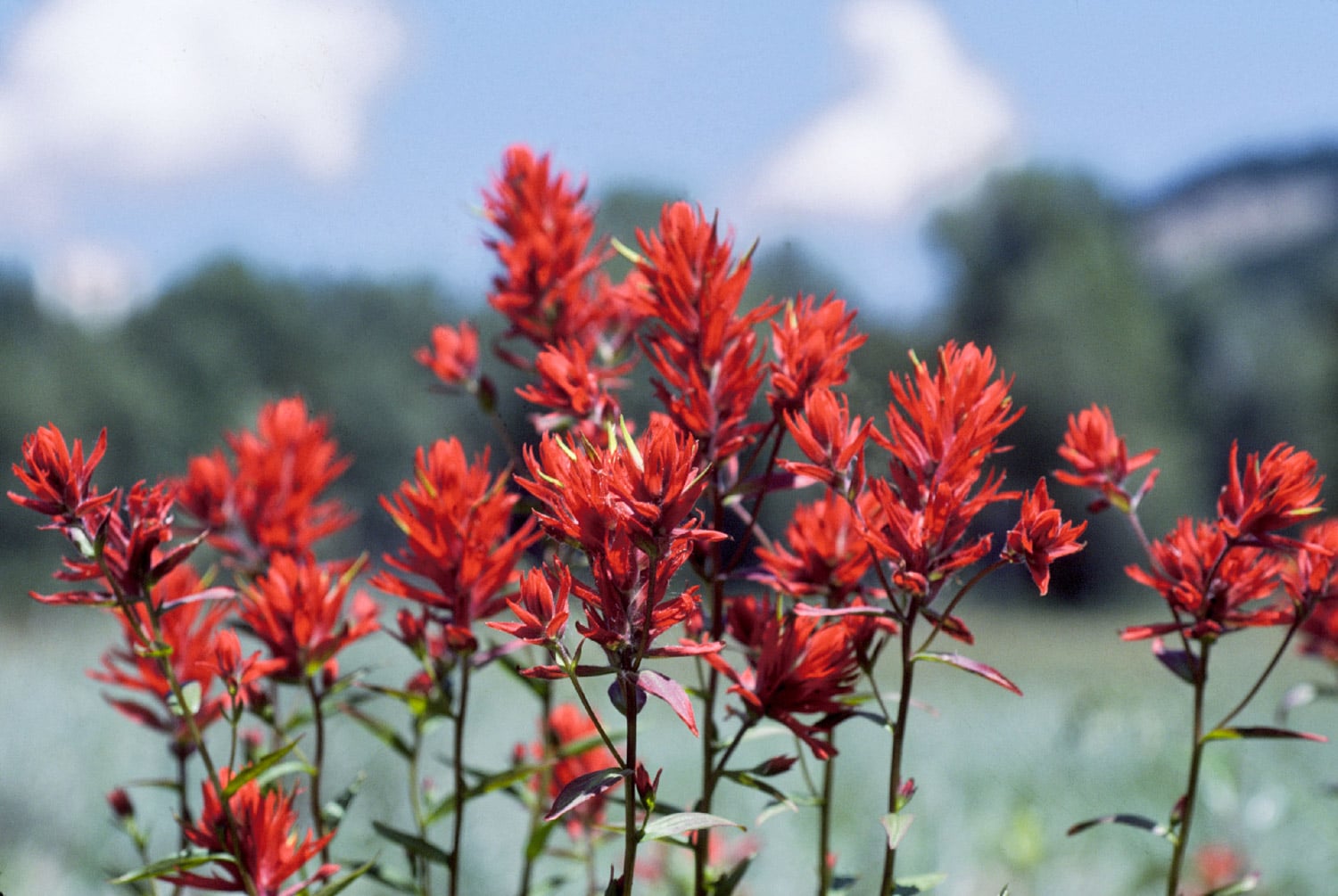
Most famous for its jagged mountain peaks and iconic wildlife, including gray wolves, black bears and grizzly bears, Grand Teton National Park might not be one of the classic wildflower national parks.
There are only about 60 days that are continuously frost-free per year here, so the growing and blooming season is very short. That short window does, however, come with a true explosion of color.
The park encompasses three distinct habitat zones—the sagebrush valley, forest floor and alpine zone—all of which have their own different species and flower types.
Due to the short blooming period, the dominant flowers change rapidly. From week to week, the landscape and the colors within it change.
- Grand Teton National Park flowers to look for: paintbrush, gilia, larkspur, fireweed, orchids, alpine forget-me-not and sky pilot
- Peak Grand Teton wildflower season: May through September, with a peak in July and August
- Nearest town: Jackson Hole (5 miles)
- Nearest airports: Jackson Hole (JAC) and Idaho Falls (IDA)
7. Mount Rainier National Park, Washington
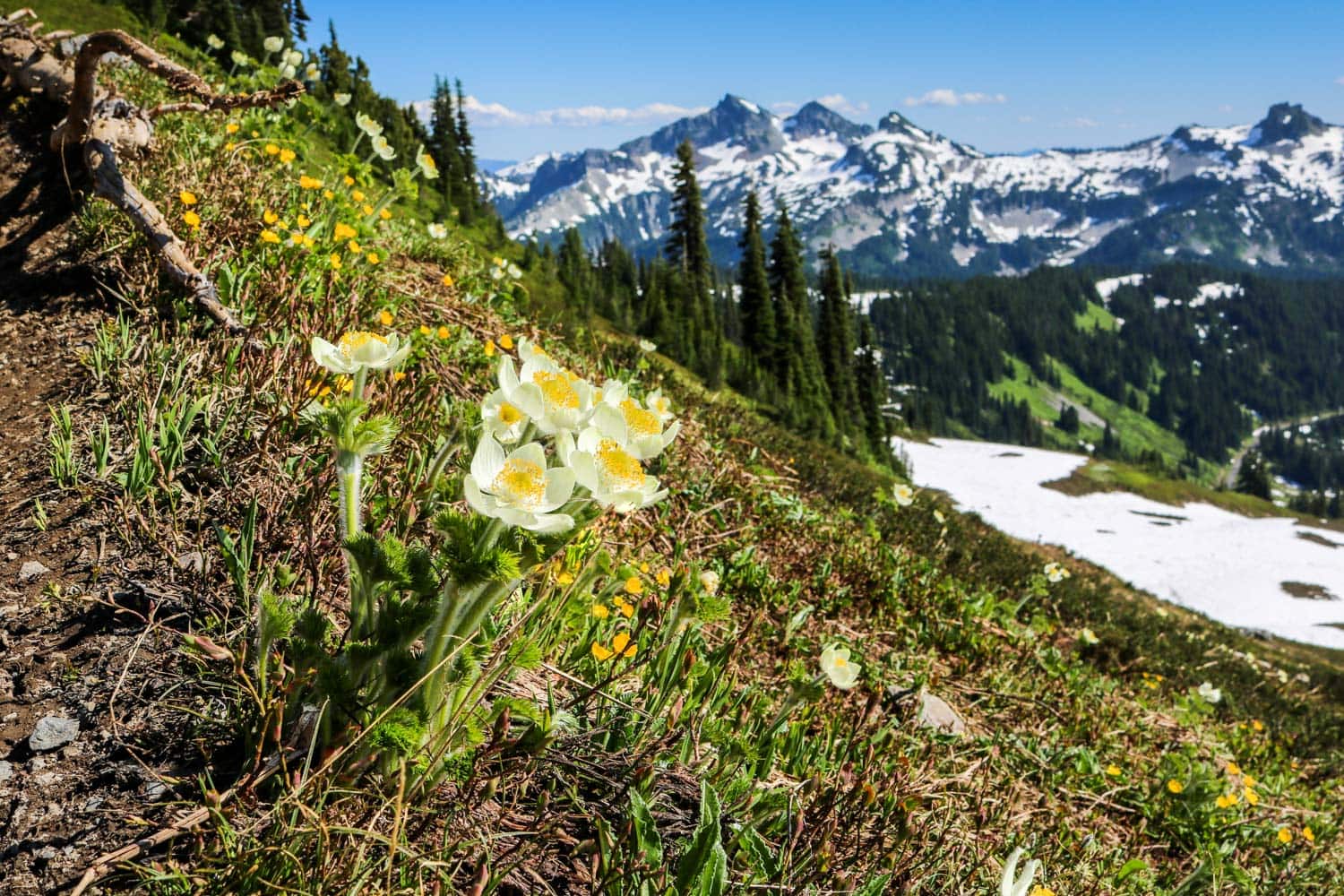
Home to an area of sloped subalpine meadows, bubbling brooks and waterfalls that’s rightly called “Paradise”, Mount Rainier is arguably the single best national park to see wildflowers.
In fact, the wildflower-covered meadows on the southern slopes of this massive volcano are one of the star attractions in Mount Rainier National Park. This area is famous among nature lovers, photographer and hikers for good reason.
The best time to see the glorious Mount Rainier National Park wildflowers is from June through August, with the peak Mount Rainier bloom usually occurring around late-July and early-August.
A summer Pacific Northwest road trip to this spectacular national park in Washington will give you mountain landscapes that are almost too beautiful to be real.
Hike the superb Skyline Trail to see countless lilies, asters, lupines and paintbrush carpeting the mountain’s flank.
- Mount Rainier National Park flowers to look for: dwarf lupine, paintbrush, asters, lilies, phlox and subalpine daisy
- Peak Mount Rainier wildflower season: June through August
- Nearest town: Ashford (6 miles)
- Nearest airports: Seattle (SeaTac, SEA) and Portland (PDX)
8. North Cascades National Park, Washington
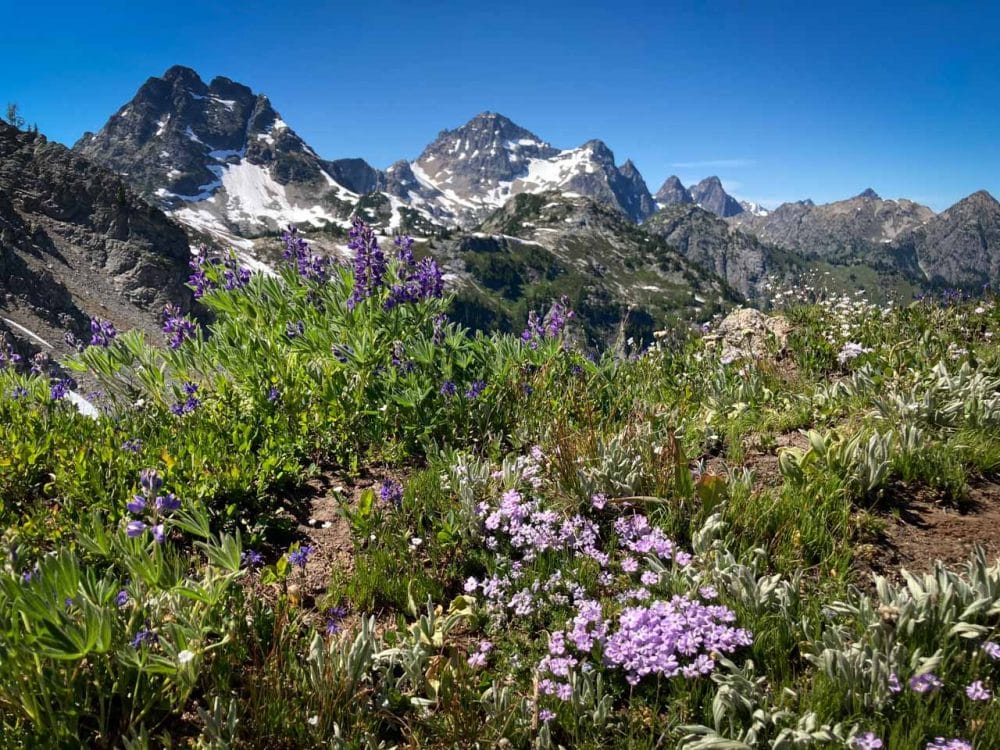
One of the least visited national parks in America, the North Cascades National Park Service complex is a majestic mountain wilderness.
Located in the north of Washington State, this is a place of craggy peaks and razor-sharp ridges, hundreds of glaciers, turquoise lakes and glorious alpine meadows.
Wilderness trails wind their ways through old-growth forests, along towering mountains and across high-elevation passes. In summer, these North Cascade trails bring hikers to an absolute wildflower paradise.
From late-June through August, the slopes and meadows of the North Cascades see an explosion of flowers. All kinds of colors cover the landscape, from purple lupines and red paintbrush to white beargrass and yellow cinquefoil.
I recommend hiking the Maple Pass Loop and Cascade Pass Trail for the best North Cascades wildflower experience. Both are among the best day hikes I’ve ever done, and the reason why North Cascades National Park is one of my all-time favorite national parks for wildflowers.
Consider pitching a tent at Colonial Creek Campground on the south shore of Diablo Lake. You’ll want to spend more than one day here, trust me!
- North Cascades National Park flowers to look for: lupine, heather, paintbrush, alpine cinquefoil, red columbine, phlox, asters and beargrass
- Peak North Cascades wildflower season: June through August
- Nearest towns: Marblemount (6 miles) and Rockport (14 miles), or Chelan (boat ride to Stehekin)
- Nearest airport: Seattle (SeaTac, SEA)
Other “Best National Parks…” Posts
- Best National Parks to Visit in Spring
- Best National Parks for Wildlife Watching
- National Parks for Outdoor Adventures Without the Crowds
- Best National Parks for Mountain Biking
- Best National Parks for Road Cycling
- Best National Parks for Birding
- Most Beautiful Buildings in National Parks
- Most Pet-Friendly National Parks
- Best Gateway Towns near National Parks
- Best Urban National Park Service Sites
- Top National Parks for Stargazing in the U.S.
- All National Parks with Volcanoes in the U.S.
- Top National Parks for Fall Foliage
- Best National Parks for Winter Wonderlands
- Best National Parks for Aurora Borealis
If you’d like to see those national park wildflowers and are from abroad, make sure to apply for ESTA for the USA online before leaving.




